- Home
- slideshows
- miscellaneous
- The remarkable stories behind 8 of the most iconic war photos ever taken
The remarkable stories behind 8 of the most iconic war photos ever taken
1. The Dead of Antietam (1862)

2. Warsaw Ghetto Boy (1943)
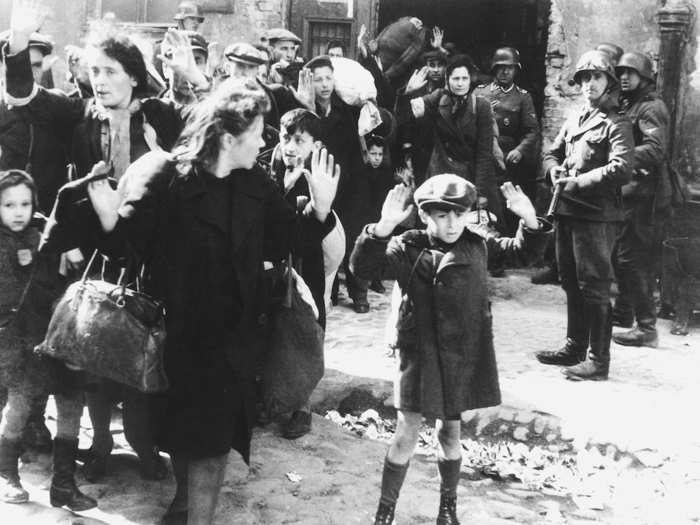
Likely taken by a Nazi photog named Franz Konrad, this photo shows Nazis rounding up Jewish people in the Warsaw ghetto.
The 9-year-old boy in the picture may have been Dr. Tsvi Nussbaum, who later became a doctor in New York, but the claim was never proven.
In any event, as the Washington Post's Clay Harris wrote in 1978, the picture "wrenches the heart because it appears that the boy, like millions of Jews and others, is to die at the hands of the Nazis."
3. Raising the Flag on Iwo Jima (1945)
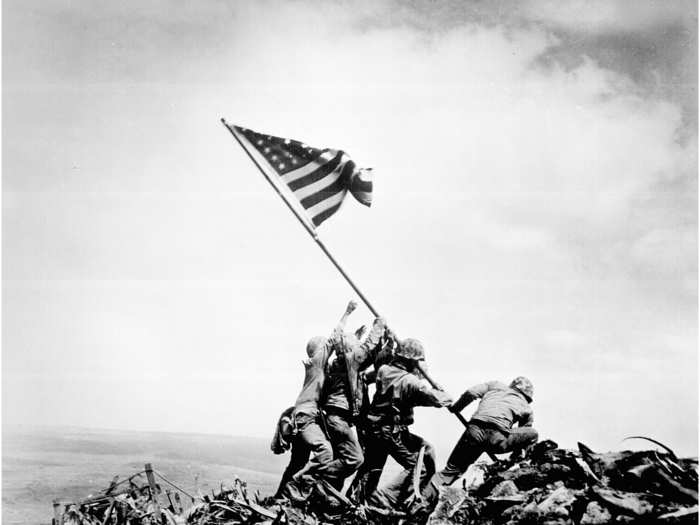
This photo by Joe Rosenthal of the American flag being planted on Iwo Jima may be the Second World War's most iconic photo.
Fifty years after the picture was taken, the Associated Press wrote that it may be the world's most widely reproduced.
Half of the six soldiers depicted died — among 6,821 Americans — on the very same island they claimed: Franklin Sousley, Michael Strank, and Harlon Block.
Rosenthal received a Pulitzer Prize for the photo in 1945.
4. Raising a Flag over the Reichstag (1945)

This was the Red Army's "Iwo Jima" moment: Soviet troops fixing the flag of the Soviet Union atop the Reichstag to conclude the Battle of Berlin.
On May 2, 1945, Soviet photographer Yevgeny Khaldei snapped the now-famous photo of Alyosha Kovalyov and Abdulkhakim Ismailov raising the hammer and sickle over the Reichstag.
But the truth behind the photo, who was in the photo, and who actually raised the Soviet victory banner, was muddled by the Russian propaganda machine for decades.
Read more about the photo here.
5. Saigon Execution (1968)
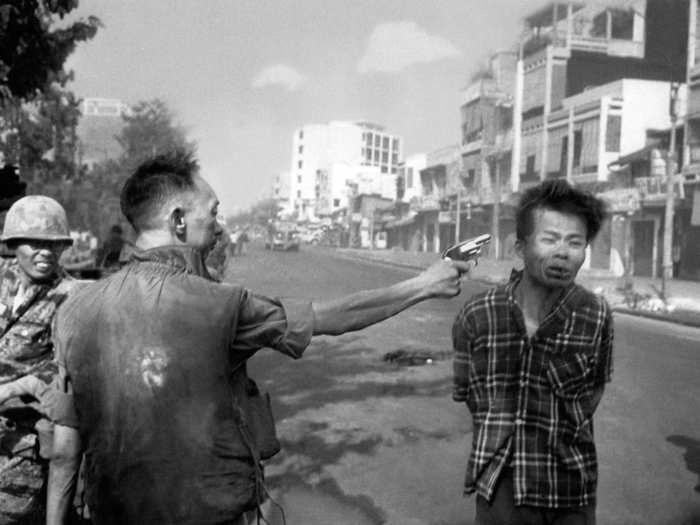
Taken by Eddie Adams, this photo shows South Vietnamese Gen. Nguyen Ngoc Loan executing suspected Viet Cong officer Nguyen Van Lem in Saigon during the Tet Offensive of the Vietnam War.
The photo was shown around the world and displayed at anti-war demonstrations in the US.
"You can see the gun, you can see the expression on the man's face as the bullet enters his head, and you see the soldier on the left who is wincing at the thing that has happened," Hal Buell, who previously ran The Associated Press, told NPR in 2009.
Adams won a Pulitizer Prize for the picture in 1969, but later wrote that the attention given to the picture disturbed him.
6. Napalm Girl (1972)
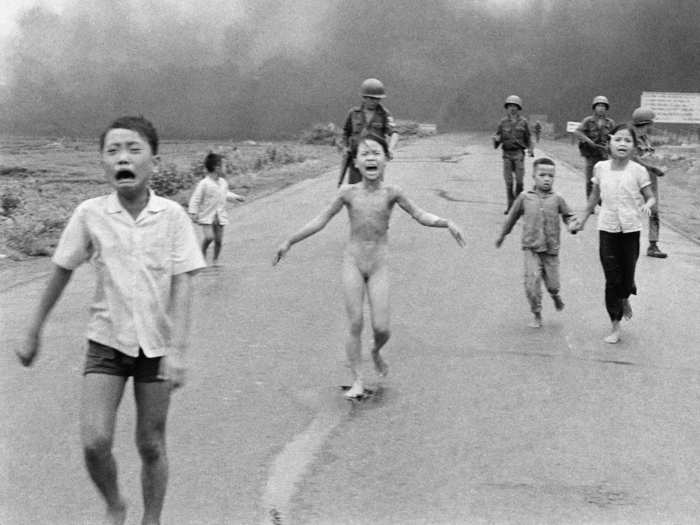
Taken by Nick Ut, this photo shows South Vietnamese children running after a South Vietnamese plane accidentally dropped napalm on its own soldiers and civilians during the Vietnam War in 1972.
The naked girl, Kim Phuc, had ripped off her burning clothes while fleeing.
Ut said Phuc screamed in Vietnamese, "Too hot! Too hot!" before he put her in an AP van where she crouched on the floor. Her burnt skin peeled off her body as she sobbed "I think I'm dying, too hot, too hot, I'm dying."
The picture became symbolic of the atrocities of the Vietnam War, and Ut won a Pulitzer Prize for the shot in 1973. Phuc, now a 55-year-old Canadian citizen, runs a foundation that assists children injured and traumatized by war.
7. Joseph Duo in Battle (2003)
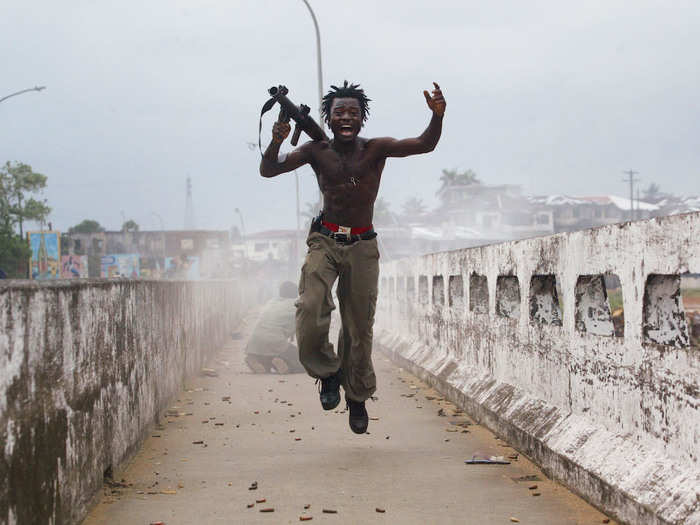
In June 2003, Chris Hondros took this image of Liberian commander Joseph Duo after he fired an RPG at rebel forces during a battle in Monrovia during the Second Liberian Civil War.
Hondros' photos, along with the work of other photojournalists that summer, has been credited by many with helping stop the civil war.
But Hondros himself later admitted in an interview that he wasn't sure whether the photo glorified or condemned war.
"Does it celebrate war or is it, you know, something else?" Hondros said. "I think a lot of different people would take different things away from that picture."
8. Iraqi Girl at Checkpoint (2005)

In January 2005, Chris Hondros captured this picture of 5-year-old Samar Hassan after US troops had accidentally killed her parents at a checkpoint in the Iraqi town of Tal-Afar.
The photo ran in newspapers and media outlets around the world for days, forcing the US military to change how it operated checkpoints and further questioned the role of the US in Iraq.
Hondros was killed in 2011 while covering the Libyan Revolution.
Here are some other iconic war photos to check out:
The Falling Soldier by Robert Capa.
American GI Moving Towards Omaha Beach by Robert Capa.
Bloody Saturday by HS Wong (1937).
Popular Right Now
Popular Keywords
Advertisement